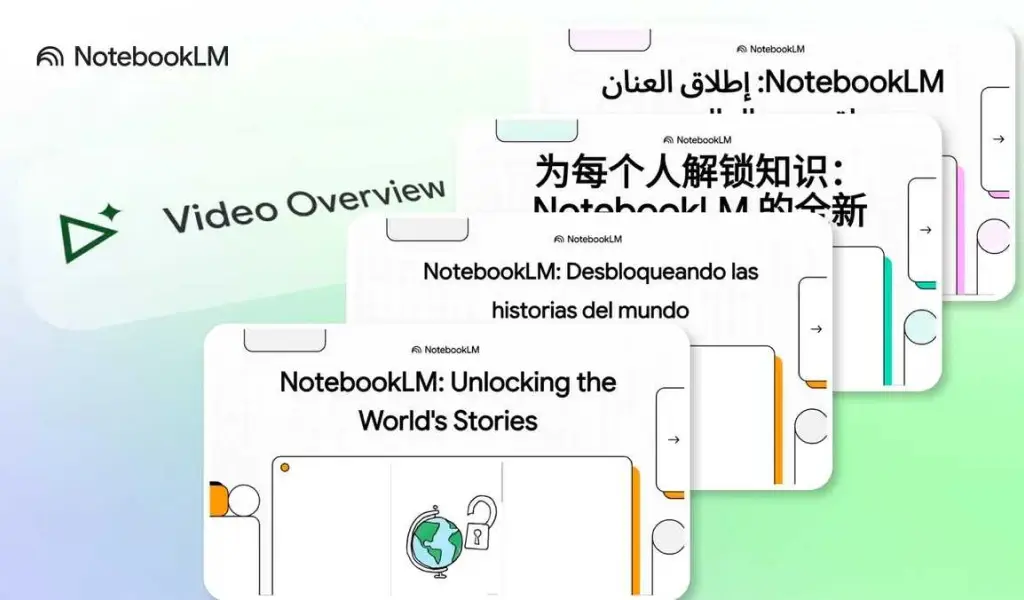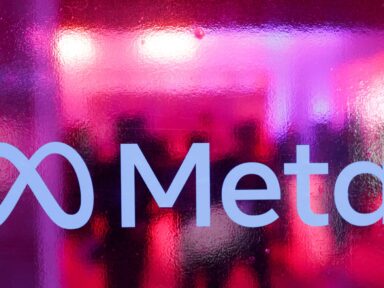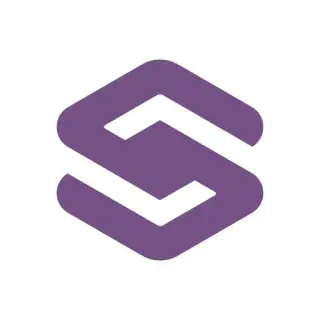Takeaways
• Google has significantly expanded NotebookLM with new capabilities including audio and video analysis, support for 10 additional languages, and handling of longer documents.
• The AI tool can now generate summaries and insights from audio and video files, making it easier to work with multimedia content.
• NotebookLM’s language expansion includes support for French, German, Spanish, Portuguese, Italian, Dutch, Polish, Swedish, Indonesian, and Japanese.
• The platform now accepts documents up to 200,000 words, a substantial increase from its previous limit.
• These updates position NotebookLM as a more versatile research and content analysis tool for various professional and educational applications.
Google has rolled out a series of significant updates to NotebookLM, its AI-powered research assistant, enhancing its capabilities with multimedia support, additional language options, and the ability to process longer content. These improvements transform NotebookLM from a text-focused tool into a comprehensive research assistant capable of handling diverse content types across multiple languages.
Audio and Video Analysis Capabilities
One of the most substantial additions to NotebookLM is its ability to process audio and video content. Users can now upload audio recordings or video files directly to the platform, which then analyzes the content and makes it searchable alongside text documents. This feature proves particularly valuable for researchers, students, and professionals who work with lectures, interviews, or presentations.
The system transcribes the audio content and integrates it with the platform’s existing AI capabilities. This means users can ask questions about their multimedia files, generate summaries, or extract key insights—just as they would with text documents. For instance, a researcher could upload a recorded interview, then ask NotebookLM to identify the main arguments or create a concise summary of specific discussion points.
This multimedia support significantly expands NotebookLM’s utility, allowing users to maintain a single workspace for all their research materials regardless of format. The tool’s ability to connect concepts across different media types creates a more integrated research experience.
Multilingual Support Expands Global Reach
Google has dramatically expanded NotebookLM’s language capabilities, adding support for ten additional languages beyond English. Users can now work with content in French, German, Spanish, Portuguese, Italian, Dutch, Polish, Swedish, Indonesian, and Japanese.
This multilingual functionality extends across all of NotebookLM’s features. The platform can analyze documents in these languages, generate summaries, answer questions, and create notes with the same level of sophistication previously available only for English content. The expansion makes the tool accessible to a much broader global audience and enables research across linguistic boundaries.
For multilingual researchers or those working with international sources, this update eliminates the need to translate materials before analysis. A user could, for example, upload documents in multiple languages to a single notebook and receive coherent insights that bridge language barriers.
Handling Longer Documents for Complex Research
The third major update addresses a common limitation of AI research tools: document length restrictions. NotebookLM now accepts documents up to 200,000 words—approximately equivalent to a 400-page book. This substantial increase allows users to work with longer academic papers, books, reports, and comprehensive research materials.
This enhancement is particularly beneficial for academic researchers, book authors, and professionals dealing with extensive documentation. The system maintains its ability to understand context and connections across these longer documents, enabling users to extract insights from complex materials without artificial segmentation.
The expanded capacity means users can upload entire books or lengthy research papers and still benefit from NotebookLM’s ability to identify patterns, summarize content, and answer specific questions about the material.
Practical Applications for Professionals and Researchers
These updates collectively position NotebookLM as a more versatile tool for a wider range of professional applications. Journalists can analyze interviews and press conferences, extracting quotes and summarizing key points. Students can upload lecture recordings and course materials in various languages, creating comprehensive study resources. Researchers can work with diverse source materials, including recorded field interviews and multilingual academic papers.
The platform’s enhanced capabilities also make it valuable for content creators who need to research, organize, and synthesize information from various sources. Business professionals can use it to analyze earnings calls, customer interviews, or market research across multiple languages.
Google’s continued investment in NotebookLM reflects the growing importance of AI tools that can work across different content types and languages, adapting to the diverse ways information is created and consumed in the digital age.
FAQ
What file formats does NotebookLM support for audio and video?
NotebookLM supports common audio and video formats, though Google hasn’t specified all compatible formats. Users can upload audio recordings and video files directly to the platform, which then processes and transcribes the content for analysis alongside text documents.
How accurate is NotebookLM’s transcription of audio and video content?
While Google hasn’t published specific accuracy metrics, the transcription technology leverages Google’s advanced speech recognition capabilities. The accuracy may vary depending on factors like audio quality, accents, background noise, and technical terminology in the content.
What are the new language options available in NotebookLM?
NotebookLM now supports 11 languages in total: English (previously available) plus French, German, Spanish, Portuguese, Italian, Dutch, Polish, Swedish, Indonesian, and Japanese. All features are available across these languages.
Is there a file size limit for uploading content to NotebookLM?
Google hasn’t specified exact file size limits, but the platform now accepts documents up to 200,000 words (approximately 400 pages). For audio and video content, typical file size restrictions likely apply, though specific limits haven’t been detailed in the announcement.
Can NotebookLM analyze content in multiple languages within the same project?
Yes, NotebookLM can work with documents in different languages within the same notebook. This allows users to research topics across language boundaries and receive insights that connect concepts from multilingual sources.
How does NotebookLM handle citations when generating content from audio or video?
Similar to its text capabilities, NotebookLM maintains citations when generating content from audio and video sources. This helps users track the origin of information and verify facts from their multimedia content.
Integration with Google’s AI Ecosystem
NotebookLM’s expanded capabilities align with Google’s broader strategy of enhancing its AI tools with multimodal capabilities. The platform now sits more comfortably alongside other Google AI offerings like Gemini, which can also process various types of content. This integration creates a more cohesive ecosystem for users who rely on Google’s tools for research and content creation.
The updates to NotebookLM reflect Google’s response to user feedback and competitive pressures in the AI tool space. By addressing limitations related to media types, language support, and document length, Google has significantly increased NotebookLM’s utility for serious research applications.
The platform remains free to use during its experimental phase, though Google continues to refine its features based on user feedback. These latest updates suggest that NotebookLM is evolving from an experimental tool into a more robust research assistant that could eventually become a core part of Google’s professional and educational offerings.
For researchers, students, and professionals who deal with diverse content types across multiple languages, NotebookLM’s expanded capabilities represent a significant step forward in AI-assisted research tools. The ability to analyze audio, video, and text content in a unified environment streamlines the research process and enables more comprehensive understanding of complex topics.

















How would you rate NotebookLM AI Assistant Now Supports 80 Languages & Video Summaries?